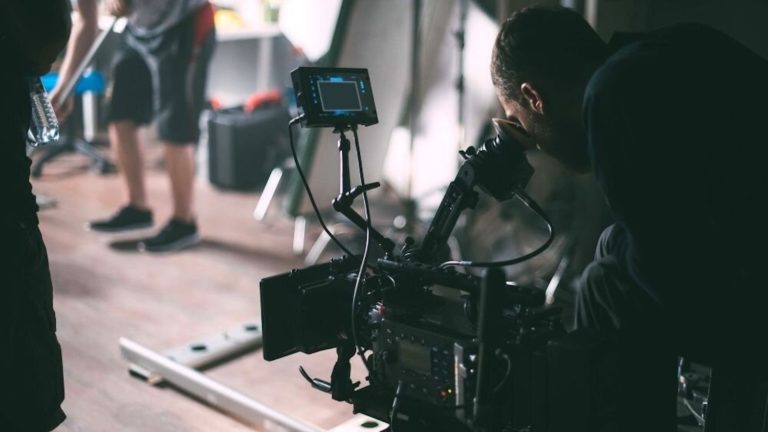In the movie world, there are two very distinct ways that films are made. One, are Independent films, which are made outside the Studios system and the others are Studio Pictures, which are made within the Studio system.
Within these two unique brands, movies can differ greatly. While it’s true that Studios can back Independent Films by giving them a wider distribution, many Studios have created independent production companies, which create films that have a more independent feel. These award winning production houses include the likes of Fox Searchlight Pictures, owned by the 20th Century Fox, Screen Gems, owned by Sony Pictures Studios and Paramount Vantage, owned by Paramount Studios. In addition to these production companies, which work within the Studio system, are literally thousands of fully independent production companies that exist all over the world. The best examples, which have the most significant impact on Hollywood, are Lionsgate Films, which gave us ‘The Hunger Games’ franchise, Focus Features, which gave us ‘Dallas Buyers Club’ and The Weinstein Company, which gave us ‘The King’s Speech’.
Independent Film could also be called “small” films. The budget is smaller than a Studio Picture, which means that it costs less to make. The crew and even the cast can also be smaller too. This usually means that Independent Films focus on the telling of a smaller story through character development rather than action. It’s rare that Independent Filmmakers rely on Computer Generated Imagines or Visual Effects to tell their stories but it’s not exactly impossible. One big exception to everything I’ve written about, is the movie ‘Cloud Atlas’. This movie was written and directed by the Wachowski siblings who wrote and directed The Matrix trilogy. Considered the most expensive Independent Film ever made, at a budget of $102 million, ‘Cloud Atlas’ was an Independent Film that relied on visuals, makeup and large, exotic sets.
In contrast to “small” films, Studio Pictures could be called “big” films. They have big budgets, often exceeding $100 million, they have big crews and big casts, including big name actors. They use big sets, have big hair and makeup budgets and present a big marketing campaign to sell the film to a wider audience. They may also have big explosions, big action and/or lots of Computer Generated Images/Visual Effects. These films are often known as blockbusters. However, not every Studio Film is a blockbuster.
What the differences really come down to is how each story is told. Since Studio Pictures have larger budgets, they often through in more action or more star power because they can afford to, while Independent Films usually go for a character-driven approach. This means that the movie places its characters at the center of the action, rather than the story. We, the audience, get to know the film’s characters on a more personal level. We often find out where they have been in life and usually experience some kind of a personal journey with them. We often find them at the pinnacle of their careers or love life and then there’s some loss. Or, we find them at the depth of despair and then we see them rise above the noise.
Character-driven films are not concern with placing a story at the forefront. It’s not about trekking across thousands of miles of mystical landscape in order to through a golden ring into a pool of hot lava. In war movies, the character-driven film would focus on the characters in the unit rather than having them find one Private in order to bring him home. Those examples, are story-driven films. Story-driven films have a huge significance on Hollywood and bring in the most revenue at the box office. Independent Films have financially done quite well in the past but they often bring in less of a return.
Independent Films, aka “small” films, tend to be character-driven. They’re made with less money, have a smaller cast and crew, they work on smaller sets and have less visuals to work with. To compensate, characters tend to be the star of the film. These characters are put into realistic situations and must fight through real life drama or react with real life comedy.
Studio Pictures, aka “big” films, tend to have more to work with. They have bigger budgets, bigger casts with bigger names, bigger crews with bigger names, larger and sometimes more exotic sets and they can afford more visual effects. They tend to be story-driven. The first and foremost importance is placed on the characters going somewhere to experience some thing. Or to spend the entire film training to compete in an event. Or even to rescue another character from certain demise.
I don’t want to generalize and understand that not every film follows the same patterns. So here are four lists of films that follow and don’t follow what I wrote above. All of these films are definitely worth checking out, especially to compare the difference between character verses story driven movies and Independent verse Studio-made films.
Character-driven Independent Films: The Wrestler (2008), Rocky (1976), Platoon (1986)
Story-driven Independent Films: The Silence of the Lambs (1993), Saw (2004)
Character-driven Studio Pictures: Ed Wood (1994)
Story-driven Studio Pictures: The Lord of the Rings Trilogy (2001, 2002, 2003), Memento (2000)
Enjoy!
Originally posted to movies4maniacs.tumblr.com on July 25th, 2014














Add comment